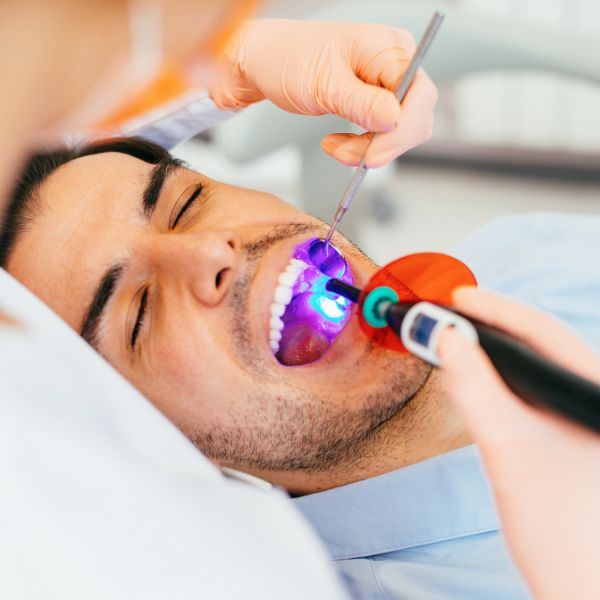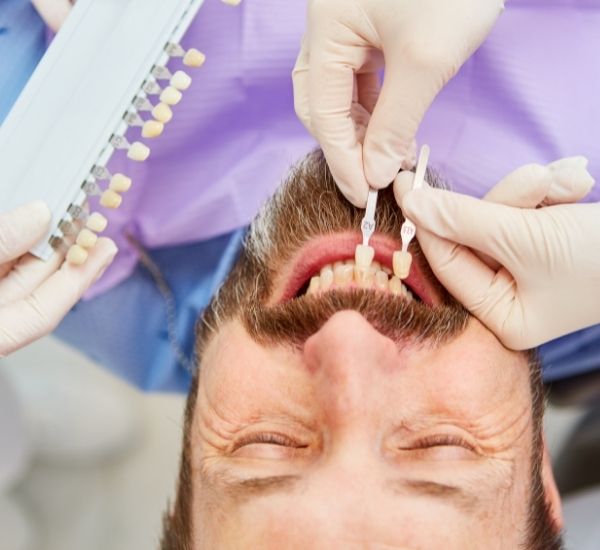

If flashing your smile is enough to make you uncomfortable due to the appearance of irregularities in your teeth, dental bonding may be something to ask your dentist about. It is not uncommon for some individuals to smile without showing their teeth because they are embarrassed about noticeable cracks, chips, gaps, or discoloration. The relatively simple procedure of dental bonding may be able to easily correct these problems and allow a person to smile confidently once again.
What Is Dental Bonding?
Although the term dental bonding sounds technical, it can actually be quite basic. The process of dental bonding includes a professional dentist applying a resin material to one or more teeth to eliminate obvious irregularities such as cracks, chips, or discoloration in the teeth.
This procedure is typically done in the dentist’s office and is considered to cause patients little to no pain for the desired outcome, so much so that it usually does not require anesthesia unless a decayed tooth requires filling.


Who Is a Candidate for Dental Bonding?
For some individuals, dental bonding can be strictly a cosmetic procedure they want for themselves, and in others it may be recommended by a dentist. Some of the most common reasons individuals seek out dental bonding treatments at Meyerland Family Dentistry typically include:
- Teeth that are clearly chipped or cracked
- Tooth discoloration that is highly visible
- Teeth that appear not to be uniform in shape or size (gaps between teeth and teeth that are smaller or shorter than others)
While dental bonding is widely considered to be a basic procedure, it is necessary for a patient to discuss their interest in the process with their regular dentist to ensure they are eligible. If a patient is suffering from other dental health or overall health issues, those will need to be taken into consideration.
How Dental Bonding Works
When a patient makes an appointment with a dentist for dental bonding, the process generally follows the below steps:
- Making sure the teeth in question are properly cleaned with as much plaque and tartar removed as possible so there is a cleaner surface to work with.
- Choosing a resin color that most closely matches the patient’s other teeth so that the end result is a tooth that matches neighboring teeth closely.
- Using a special implement to roughen the surface of the tooth before a particular substance is applied that is designed to help bonding adhere more completely.
- Applying the resin to the desired tooth to cover up cracks, chips, and discolorations and possibly to allow for more uniform shaping. Blue light technology is used to properly cure and set the resin. Once the resin has hardened, the dentist then has the capability to file or trim its shape to create uniformity with the other teeth.
The entire process can take anywhere from thirty minutes to an hour for most patients at a dentist’s office, making it potentially possible to have done essentially over the period of a workday lunch break.


The speed of the process in combination with the fact that it is usually completed in one appointment and that it is minimally invasive makes it popular with patients. However, patients should note that good hygiene and regular professional dental care are critical to extending the life of bonding.
Some practical tips dental bonding recipients can use to keep their teeth in top shape are:
- Brushing their teeth twice a day
- Flossing daily
- Limiting intake of food and drink that has the capacity to stain
- Avoiding hard food that could potentially chip the bonding
- Getting their teeth cleaned every six months by a dental professional
A patient who receives dental bonding and commits to proper hygiene and care may find that the procedure lasts up to eight years making it an easy and highly effective solution for patients wanting a cosmetic fix for their smile.
Benefits of Dental Bonding
Aside from the primary benefit of dental bonding being a simple and straight forward procedure for most patients, there are further benefits, such as:
- Little to no pain.
Most patients report the procedure to cause little to no pain unless it also involves filling a decaying tooth. The majority of the time anesthesia is not needed for patients.
- Cost effectiveness.
Some procedures designed to help camouflage or correct inconsistencies in teeth can be expensive, but bonding is relatively inexpensive in comparison.
- Efficiency.
Dental bonding can typically be completed in one dentist appointment if it is only for one or two teeth, depending on their location and the dentist’s schedule.
- Increased confidence.
Patients who have hidden their toothy smiles from the camera for years may find that they now have the brightest smile in the picture with the increased confidence dental bonding has given them.
If you have cracked, chipped, or discolored teeth or have gaps that have you feeling less likely to share a smile, consider speaking with your dentist about whether dental bonding is right for you. The relatively fast process of dental bonding may have you feeling more confident and offering a smile to everyone you meet.
